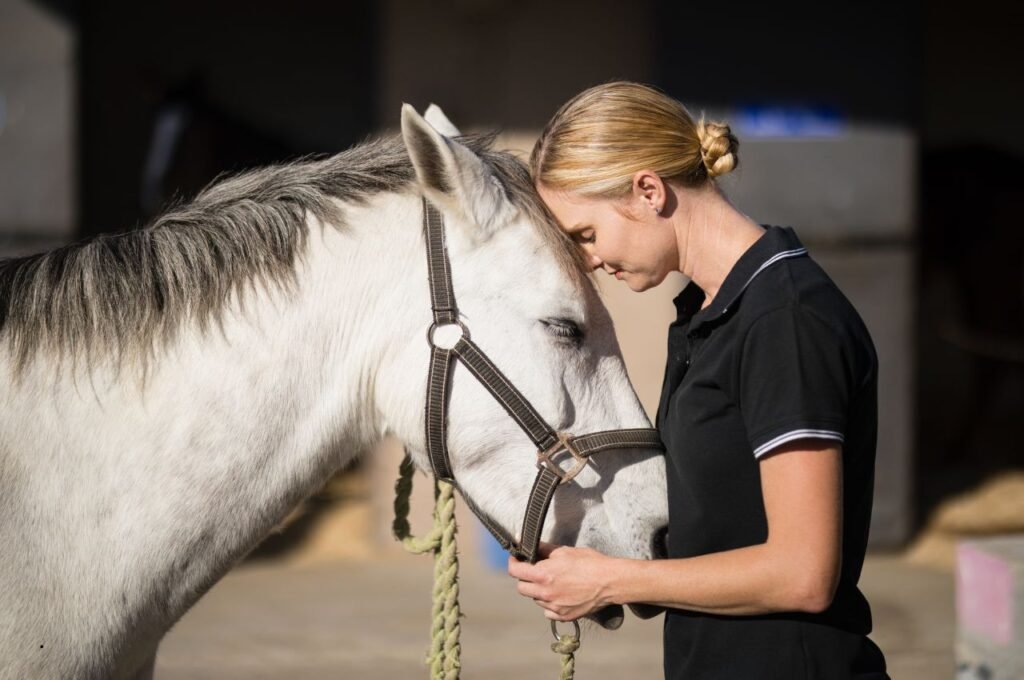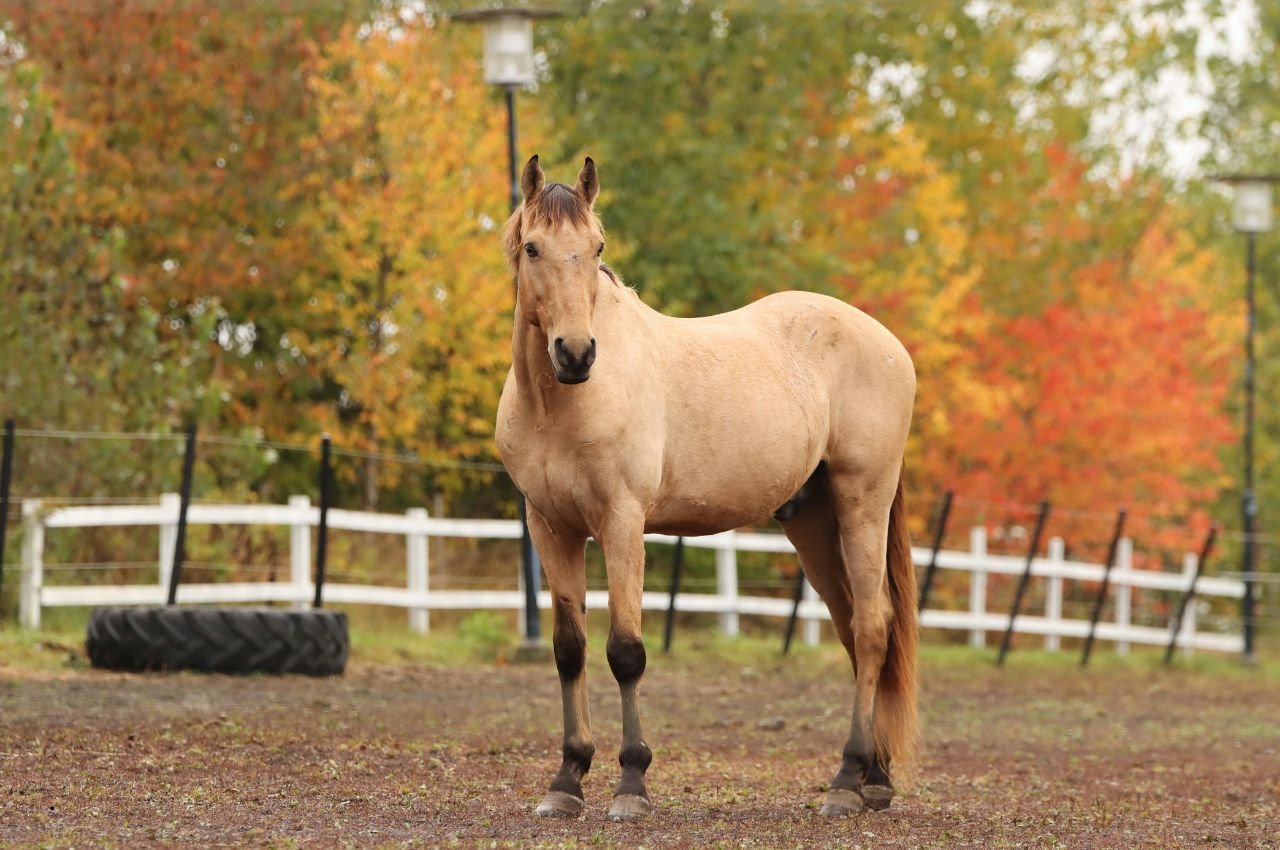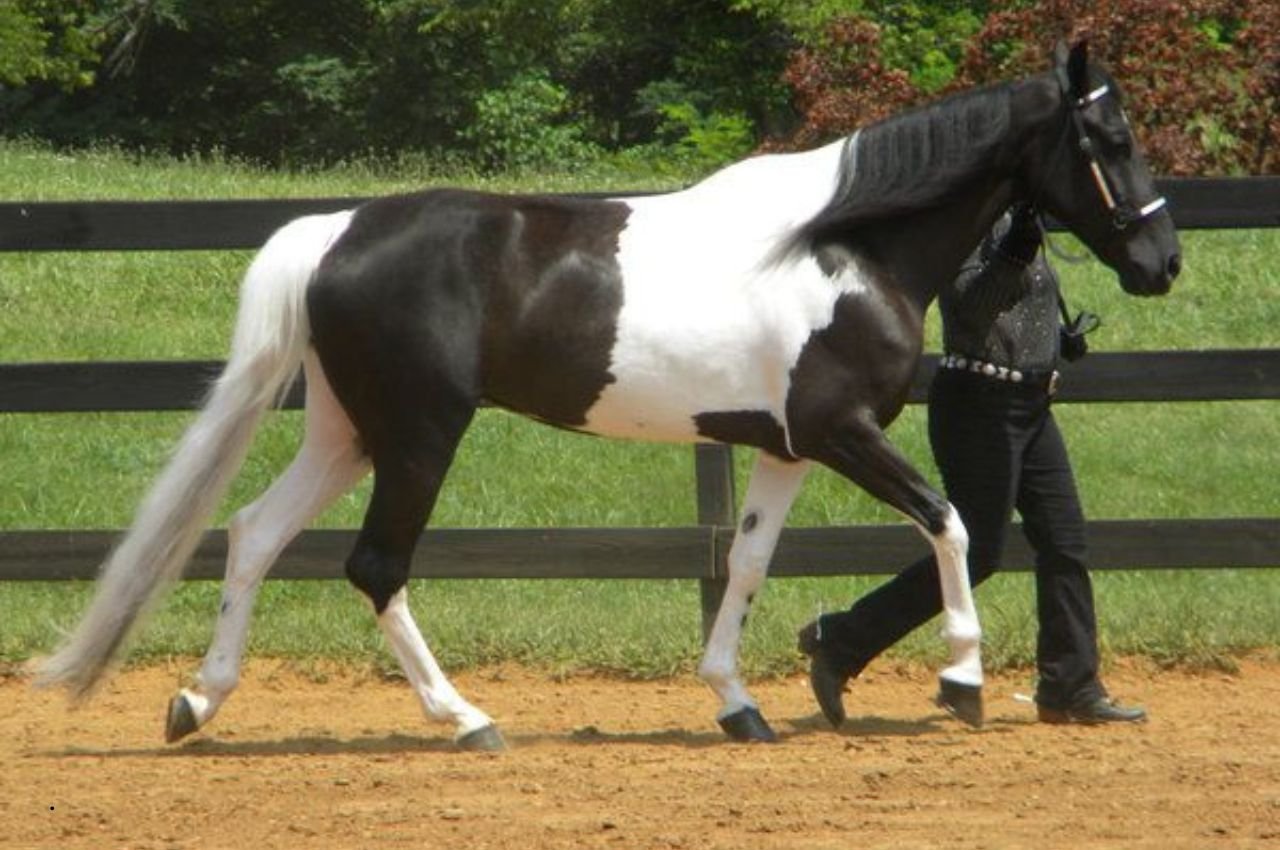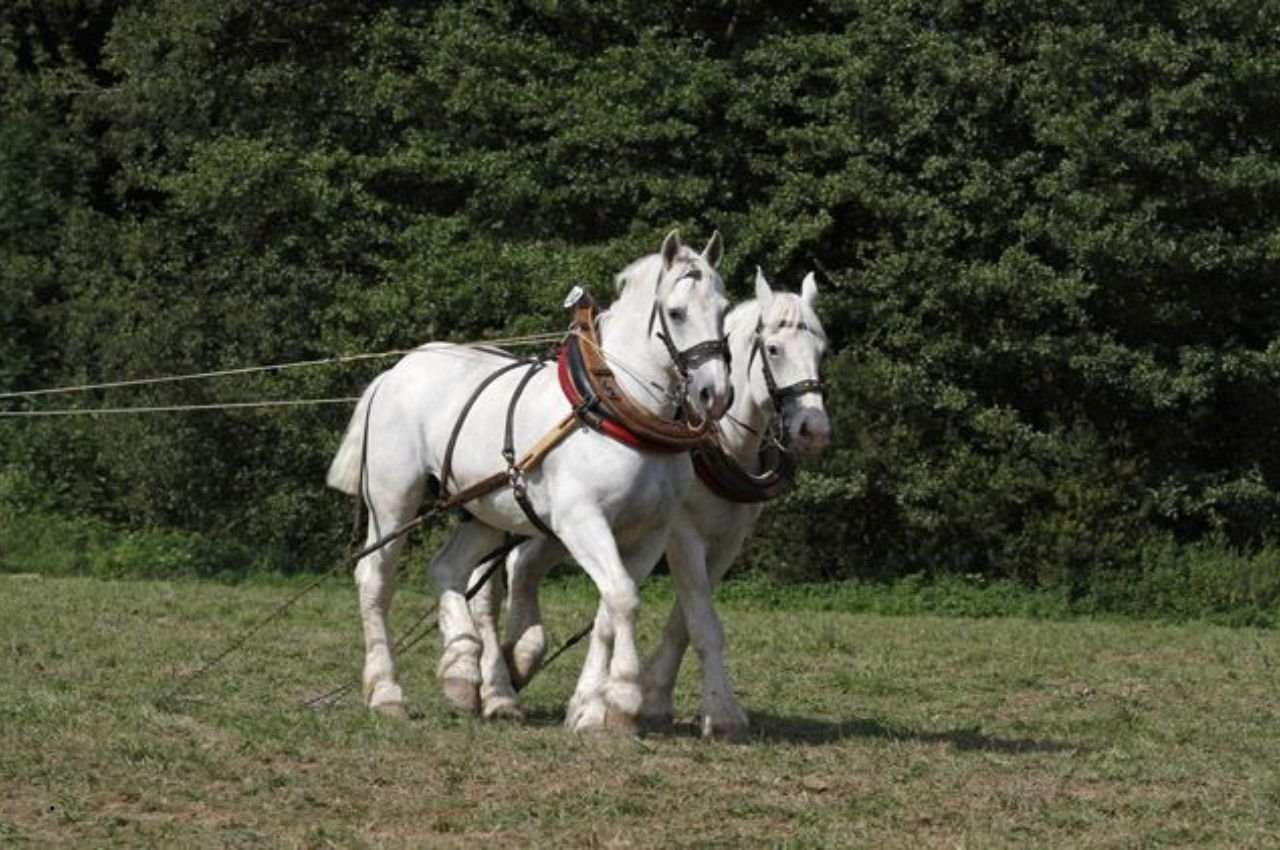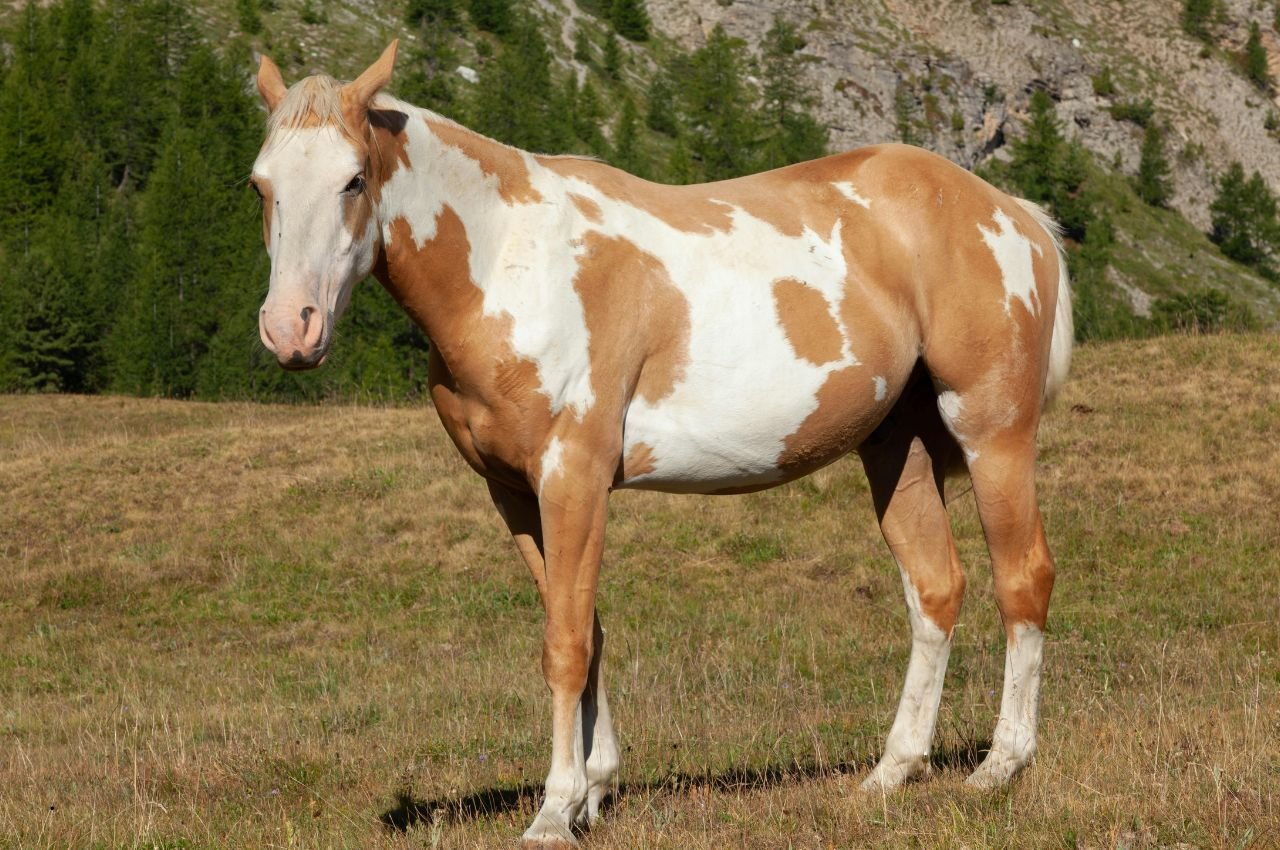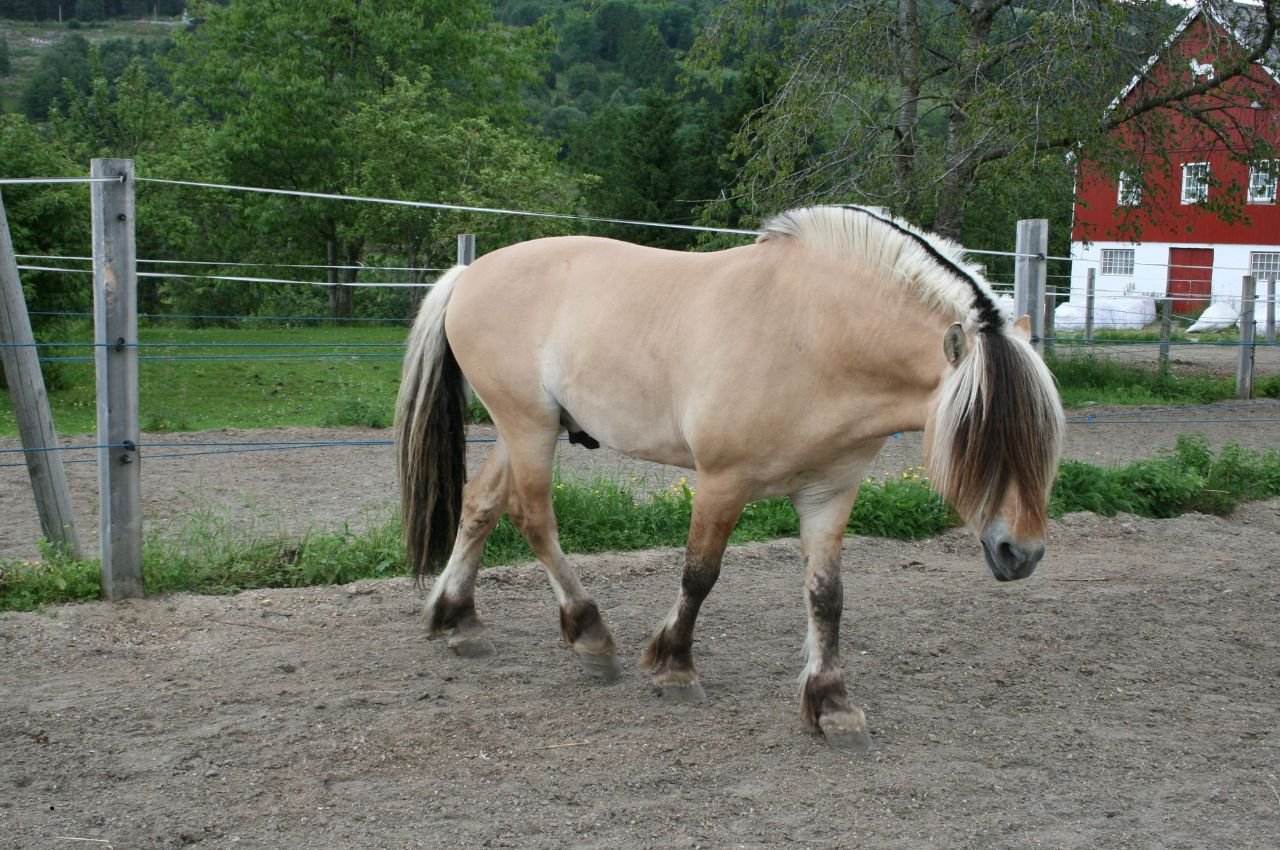Understanding Equine Mental Health
What Is Mental Health in Horses?
When we think about our horses, we often focus on their diet, hoof condition, or exercise routine. But what about their mental health in horses? Just like humans, horses experience a range of emotions—happiness, fear, anxiety, even boredom. Mental health in horses refers to their emotional and psychological well-being. It’s how well they cope with stress, how engaged they are with their environment, and how balanced their behavior is overall.
Horses are naturally herd animals and thrive in environments where they feel safe, understood, and socially connected. When these elements are missing, they may show signs of mental stress. A mentally healthy horse will be curious, calm, responsive, and have a good appetite. Conversely, a horse suffering mentally may appear withdrawn, agitated, or show signs of stereotypic behaviors (like cribbing or weaving).
Equine mental health isn’t a fringe topic anymore—it’s becoming central in responsible horse care. Research shows that horses with stable mental health in horses are easier to train, more sociable, and far less likely to develop behavioral issues. As caretakers, we need to become more attuned to the inner world of our horses.
Table of Contents
Why It’s Just as Important as Physical Health
You wouldn’t ignore a limp or a swollen joint in your horse, right? So why ignore behavioral changes or signs of emotional distress? Mental and physical health are deeply intertwined in horses. Chronic stress can weaken the immune system, reduce nutrient absorption, and even lead to ulcers or weight loss. A depressed horse might eat less, move less, and show less interest in engaging with its surroundings.
A stressed-out horse may also be more prone to injuries simply because it’s distracted or anxious. In contrast, a mentally healthy horse can focus better during training, interact safely with handlers, and adapt to new environments more easily.
Understanding that mental health in horses is not a luxury but a necessity is a game-changer in horse management. Think of it like this: you can feed your horse the best hay and buy the fanciest tack, but if they’re emotionally off-balance, it won’t matter. Just as we prioritize grooming, vet checkups, and hoof care, supporting mental health in horses needs to be part of the routine.
Common Signs of Mental Distress in Horses
Horses don’t speak our language, but they do communicate constantly—through body language, movement, and behavior. If your horse starts acting “off,” it could be more than just a bad day. Here are some red flags that may indicate your horse is struggling mentally:
- Stereotypic behaviors like cribbing, weaving, or stall walking
- Excessive spooking or hyper-alert behavior
- Lethargy or withdrawal, especially in a previously social horse
- Aggression or irritability, either towards people or other horses
- Changes in appetite or weight without an obvious medical cause
- Poor performance, even when physically sound
Behavioral changes are often the first signs that something’s wrong mentally. These aren’t just quirks—they’re cries for help. Horses rely on routine, social structure, and environmental stimulation. When these needs aren’t met, it affects their whole system.
Monitoring your horse closely and being proactive about mental health in horses can prevent minor issues from becoming long-term problems. If your horse shows these signs persistently, it might be time to take a deeper look at their environment, social connections, and daily routine.
The Emotional Lives of Horses
How Horses Feel and Express Emotions
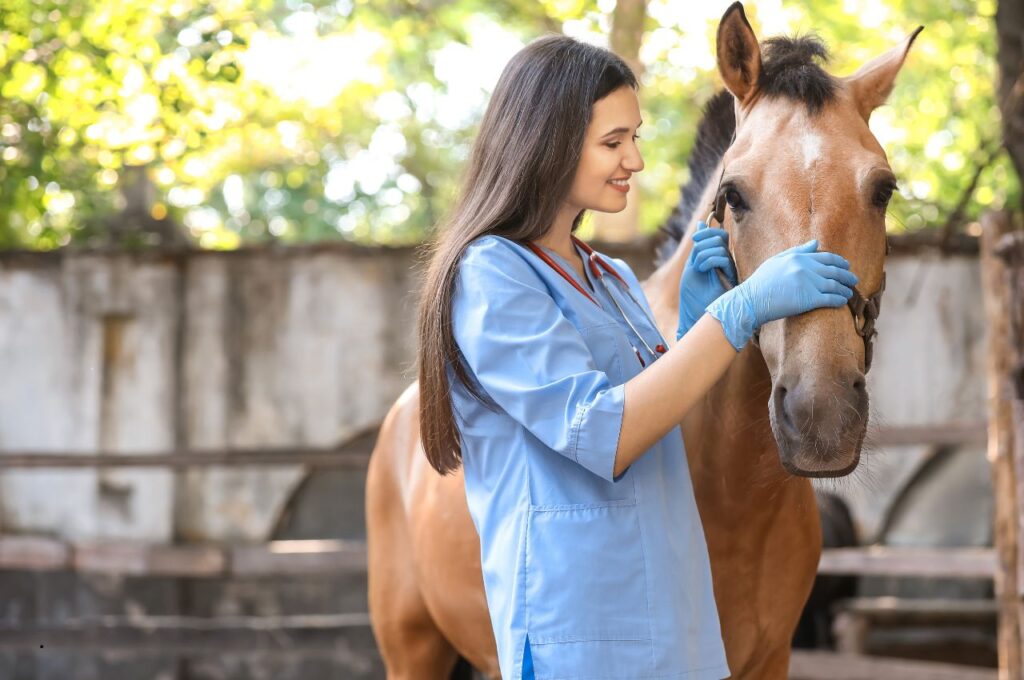
Ever noticed your horse perk up when they see a friend, or drop their head in contentment during a gentle grooming session? That’s emotion at play. Horses are incredibly emotional animals with rich inner lives. They feel joy, anxiety, fear, loneliness—and yes, even love.
They communicate their feelings primarily through body language: ears, eyes, nostrils, tail swishing, and even posture. A relaxed horse with soft eyes, forward ears, and a swishing tail is usually content. Meanwhile, flared nostrils, pinned ears, or rigid bodies can signal stress or fear.
Understanding these emotional cues allows us to respond appropriately. When we tune in to our horse’s emotional state, we can build a bond of trust and security. This emotional connection is the foundation for both mental wellness and successful training.
Horses are also deeply empathic creatures. They mirror our emotions and energy. If you approach them with frustration or anxiety, they’ll often reflect that right back at you. But if you bring calmness and reassurance, they’ll pick up on that, too. Emotional health in horses is not isolated—it’s intertwined with their interactions, especially with humans.
The Role of Human Interaction in Equine Emotions
We often underestimate how much our presence affects a horse’s emotional well-being. Horses are prey animals—they rely on body language and emotional cues to navigate the world. That means they pick up on your mood, energy level, and even your breathing.
Positive human interaction can be a major mood booster. Gentle grooming, quiet groundwork, and kind, consistent handling foster a sense of safety. This doesn’t just improve behavior—it enriches the horse’s entire life.
But the reverse is also true. Harsh training methods, unpredictable routines, or neglectful handling can erode a horse’s sense of security. Just like people, horses need consistent, respectful relationships to feel emotionally stable.
So, next time you walk into the barn, ask yourself: “What kind of energy am I bringing into my horse’s world today?”
Environmental Enrichment for a Happier Horse
Why a Stimulating Environment Matters
Imagine living in the same room with nothing to do, day after day. Sounds boring, right? Well, that’s what life can feel like for a horse stuck in a barren stall or turnout with little stimulation. Horses are intelligent, curious creatures that thrive in dynamic, engaging environments. When their surroundings lack variety or interest, it can lead to serious mental health in horses issues—boredom, frustration, even depression.
Environmental enrichment is all about creating surroundings that allow horses to express natural behaviors like exploring, playing, foraging, and socializing. These activities are essential for a horse’s emotional and cognitive well-being. Enrichment isn’t just for zoo animals—it’s a critical part of responsible horse care, too.
A well-enriched environment encourages mental activity and can dramatically reduce stress-related behaviors such as weaving, pacing, or cribbing. Whether your horse is turned out in a large pasture or spends much of their time in a stall, adding enrichment features can be a game-changer for their mood and behavior.
Think of enrichment as mental nutrition. Just like a balanced diet feeds the body, a stimulating environment feeds the mind. And when a horse’s mind is engaged, the entire animal becomes more resilient, happier, and healthier.
Tools and Toys That Help Improve Mood
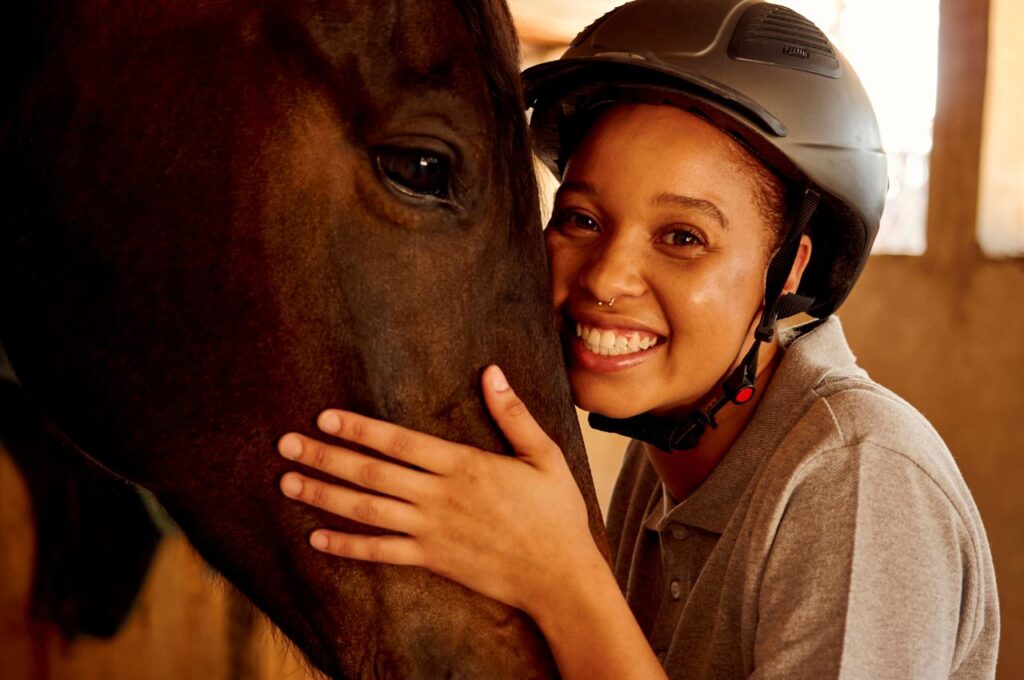
The good news? You don’t need to break the bank to give your horse the mental stimulation they need. There are tons of affordable, even DIY enrichment tools and toys available that can keep your horse mentally sharp and emotionally balanced.
Here are some popular and effective options:
- Slow feeders and treat balls: These mimic natural foraging behavior and keep horses busy.
- Mirrors in stalls: Particularly useful for horses kept alone, providing the illusion of company.
- Hanging balls or jolly balls: Great for oral play and stress relief.
- Traffic cones, barrels, and poles: Versatile tools that can be arranged in countless ways to create obstacle courses or games.
- Scented objects: Horses are curious about smells—placing safe, scented items around the paddock can offer mental stimulation.
It’s not just about handing your horse a toy and walking away. Interacting with these tools through guided play or exploration increases their effectiveness. You can even incorporate these items into groundwork sessions to build your bond while boosting their mood.
Rotation is also key. Just like kids, horses can get bored with the same toy. Swapping items out regularly keeps things fresh and exciting, which keeps that equine brain engaged.
Safe DIY Enrichment Ideas for Horse Owners
Want to spice up your horse’s daily life without spending a fortune? Try these creative and safe do-it-yourself enrichment ideas:
- Plastic Milk Jugs with Treats
Fill a clean jug with a few carrot pieces or hay cubes, then hang it from the stall ceiling using baling twine. Your horse will love the challenge of figuring out how to shake the treats loose. - Carrot Garland
Thread carrots or apple slices on a rope and hang it like a garland in the stall or paddock. It turns snack time into a fun, interactive game. - Obstacle Course with Ground Items
Use objects like buckets, cones, and wooden poles to create a mini trail course. Lead your horse through it to stimulate their mind and encourage body awareness. - Puzzle Feeders
You can make simple puzzle feeders using boxes, hay nets with treats, or even hollowed-out logs with food hidden inside. - Scavenger Hunts
Hide small treats around the paddock or pasture to encourage your horse to search and explore. This taps into their natural foraging instinct and keeps them engaged for longer periods.
DIY enrichment doesn’t have to be complex. The key is to observe your horse’s preferences and reactions. Some horses love nose-targeting games; others might prefer exploratory walks or treat challenges. Keep it safe, fun, and engaging, and you’ll see the emotional rewards unfold in no time.
Nutrition’s Role in Mental Wellness
The Gut-Brain Connection in Horses
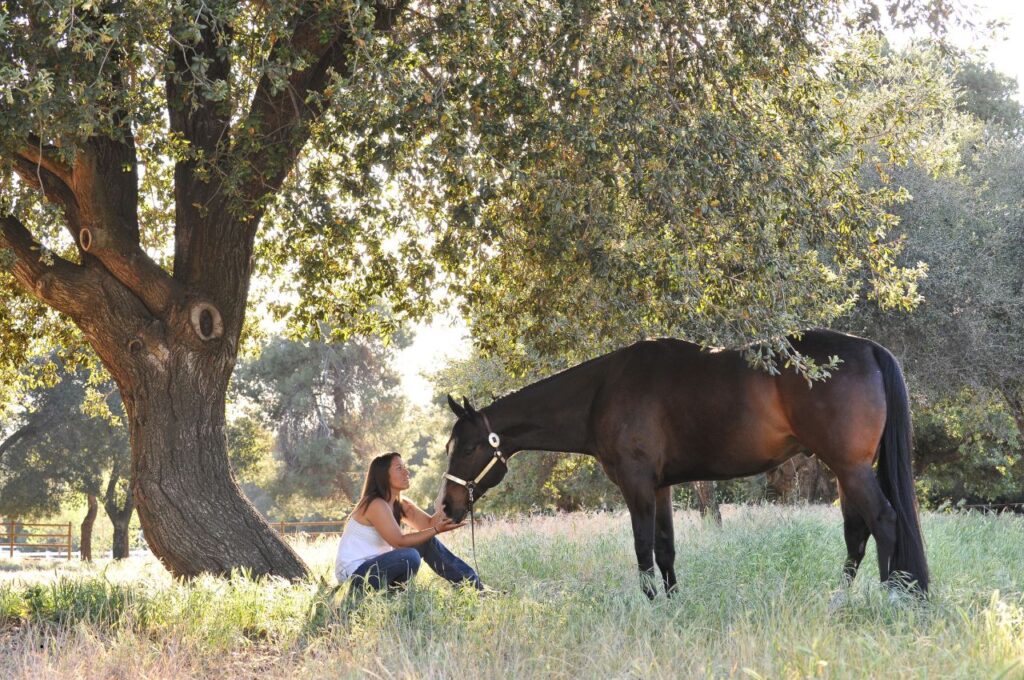
You might have heard the phrase, “happy gut, happy mind.” Well, it’s not just a saying—it’s backed by science. Horses, like humans, have a strong gut-brain connection, meaning their digestive health significantly influences their mental well-being. An unhappy gut can lead to mood swings, anxiety, and even behavioral issues in horses.
The equine gut contains a vast microbiome—a community of bacteria and microbes—that plays a crucial role in producing neurotransmitters like serotonin, often dubbed the “feel-good” chemical. If the gut is unbalanced due to poor diet, antibiotics, stress, or lack of forage, it can reduce serotonin levels, directly affecting mood.
That’s why the foundation of equine mental health in horses starts with a healthy digestive system. Constant access to forage, proper hydration, and a fiber-rich diet help keep the gut microbiome in balance. Avoid sudden changes in diet, as this can trigger gut dysbiosis and lead to behavioral changes.
Additionally, some horses experience “ulcer stress,” where the discomfort of gastric ulcers makes them irritable, withdrawn, or aggressive. Addressing gut issues like ulcers or colic sensitivity can make a dramatic difference in your horse’s behavior and mood.
Nutrients That Support a Positive Mood
Certain nutrients are directly linked to emotional stability and stress resilience in horses. When included in their diet consistently, they can support better focus, reduced anxiety, and an overall happier disposition. Here are some top mood-supporting nutrients to watch for:
- Magnesium: Known for calming effects; often used for high-strung or nervous horses.
- Omega-3 fatty acids: Found in flaxseed and fish oil, these support brain function and reduce inflammation.
- B Vitamins: Especially B1 (thiamine), which is linked to calming the nervous system.
- Tryptophan: An amino acid that aids serotonin production, helping horses relax.
- Zinc and selenium: These minerals aid neurological function and reduce irritability.
Balancing these nutrients properly is key. Too much of one and not enough of another can create new issues. Work with your vet or equine nutritionist to fine-tune your horse’s diet based on their individual needs, workload, and temperament.
It’s worth noting that behavioral supplements should never replace foundational care. You can’t out-supplement a bad routine or a lonely lifestyle. Supplements work best when combined with proper diet, exercise, socialization, and enrichment.
Supplements That May Help
If your horse is already on a balanced diet but still seems anxious, aggressive, or dull, it may be time to explore mood-enhancing supplements. Here are a few popular options that many horse owners swear by:
- Calming formulas: Typically include magnesium, B vitamins, and herbal ingredients like valerian or chamomile.
- Digestive aids: Probiotics and prebiotics can help support the gut-brain axis.
- Adaptogenic herbs: Such as ashwagandha and rhodiola, which may help the body adapt to stress.
- Omega-3 supplements: Especially useful for horses with limited pasture access.
- L-Tryptophan: Often included in calming blends to support serotonin levels.
Always introduce any new supplement gradually, and monitor your horse’s behavior over several weeks. What works for one horse may not work for another, so a bit of trial and error may be necessary.
Most importantly, consult with your vet before starting any supplement—especially if your horse is on medication or has a pre-existing health condition.
Consistent Routine and Socialization
Horses Thrive on Predictability
Imagine waking up every day not knowing when (or if) you’ll be fed, exercised, or let outside. Sounds stressful, right? That’s what life can feel like for a horse without a consistent routine. Horses are creatures of habit. They find immense comfort in predictable environments. When their daily schedule is chaotic or inconsistent, it can lead to anxiety, restlessness, and behavioral issues.
A structured routine helps horses feel secure. Knowing when they’ll be fed, turned out, exercised, or handled reduces mental stress. It’s not about being overly strict with time—but consistency in the order and pattern of daily events gives horses a sense of control and safety in their environment.
Stressful surprises—like random feeding times, inconsistent handling, or irregular turnout—can increase cortisol levels, the stress hormone. Over time, this can damage not just their mood, but also their physical health, weakening the immune system and making them more prone to illness.
Horses don’t understand time the way we do, but they do understand rhythm. Establishing and maintaining daily patterns is one of the most overlooked yet effective ways to boost equine mental health in horses. Even something as simple as grooming your horse at the same time each day can create a strong emotional anchor and a feeling of stability.
Importance of Companionship for Horses
Horses are not meant to be alone. They’re herd animals by nature, hardwired to seek safety and comfort in the company of others. Isolation can be devastating to a horse’s mental health in horses. Even the calmest, most “independent” horse benefits from social contact.
In the wild, horses form strong bonds within their herds. They graze together, play, groom one another, and sleep close by. This behavior is part of their survival instinct—but it also fulfills deep emotional needs. When kept in solitary environments, horses can become anxious, depressed, or even aggressive due to loneliness.
Socialization doesn’t always mean group turnout (although that’s ideal for many horses). It can also mean having a pasture buddy over the fence, shared turnout with compatible horses, or even regular visits and attention from their human caretakers. Some horses bond well with donkeys, goats, or ponies if no other horses are available.
Signs your horse may be suffering from lack of companionship include:
- Frequent pacing along the fence line
- Calling out or vocalizing often
- Depression or lethargy
- Aggression or overexcitement during brief interactions with others
- Self-soothing behaviors like cribbing or licking
Always introduce new companions slowly and safely to avoid injuries. But once safe bonds are formed, the emotional benefits are tremendous. Companionship is not a luxury—it’s an emotional lifeline for your horse.
Signs Your Horse Is Lonely or Bored
Loneliness and boredom are two of the biggest mood-killers for horses. Unfortunately, these emotional states are often misinterpreted or missed entirely by caretakers. So, how can you tell if your horse is just relaxing—or actually struggling emotionally?
Here are some tell-tale signs of loneliness and boredom:
- Stereotypic behaviors: Like weaving, cribbing, or stall walking.
- Disinterest in surroundings: A once-curious horse now ignores things that used to excite them.
- Hypervigilance: Constantly scanning the environment as if searching for company.
- Over-attachment to humans: Some lonely horses cling to their handlers excessively.
- Decreased appetite or changes in eating habits: Especially in herd-bonded horses that are suddenly isolated.
- Vocalizing repeatedly: Whinnying or calling to unseen horses.
While some people assume that horses are fine as long as they have food and shelter, that couldn’t be further from the truth. Mental stimulation and social fulfillment are just as important. Think of it like this: would you thrive locked in a beautiful house with gourmet meals, but no social contact or interaction? Probably not.
When you recognize the signs early, you can take steps to reintroduce social and mental stimuli. It might be as simple as more turnout time, rearranging paddocks to allow nose-to-nose interaction, or incorporating more bonding activities with you.
Physical Activity and Play
Exercise as a Mood Booster
You’ve probably noticed how energized and uplifted you feel after a good workout. Horses experience something very similar. Physical activity isn’t just good for their muscles—it’s essential for their mood, mental clarity, and emotional health.
A sedentary horse is more prone to frustration, boredom, and even depression. Movement stimulates endorphin production, improves circulation, and provides sensory input that keeps their minds engaged. In fact, lack of exercise is one of the most common contributors to behavioral problems in stabled or confined horses.
But we’re not just talking about riding here. While under-saddle work is beneficial, even free movement in a paddock or light groundwork can have dramatic effects on your horse’s demeanor. The goal is to encourage daily movement in a way that’s enriching and non-stressful.
Some great ways to incorporate movement:
- Regular turnout in large spaces
- Lunge sessions with varied gaits
- Trail rides with new scenery
- Light liberty work that allows creative movement
- Obstacle courses or pole work to engage both mind and body
Exercise also helps regulate body weight and supports better digestion, which—remember that gut-brain link?—contributes directly to better mental health in horses.
Just like us, each horse has their preferences. Some love the mental stimulation of obstacle courses, while others thrive on trail rides or liberty play. Finding what works best for your horse is part of building a deeper connection and ensuring they get the emotional boost they need.
How to Encourage Natural Play in Horses
Play is not just for foals. Adult horses play too—it’s one of the most visible signs of joy and emotional wellness. Play behavior in horses includes running, bucking, rearing, nipping, and even wrestling with herd mates. It may look wild at times, but it’s an important expression of freedom and happiness.
Creating opportunities for natural play can be as simple as giving your horse space. A wide, open field with another playful buddy is often all they need. But there are other ways to encourage playful behavior, especially if your horse is kept alone or in a confined area.
Here are some ideas to get your horse moving and playing:
- Turnout with playful companions: Let your horse interact with others of similar energy.
- Loose jumping or free lunging: Turn them out in an arena and encourage movement without tack.
- Novelty items: Cones, barrels, balls, or even floating pool toys can ignite curiosity and playfulness.
- Short liberty sessions: Reward spontaneous playful behavior with praise or treats.
Observe your horse closely. You’ll start to notice their “happy” behaviors—tail flagging, snorting, playful bucks. That’s joy in action. Encouraging and rewarding these moments helps your horse feel safe and emotionally free.
Just be sure the environment is secure and hazard-free to prevent injury during playtime.
Safe and Fun Activities to Try
If you’re looking to spice up your horse’s routine, here are a few safe and engaging physical activities that double as mood boosters:
- Trail Obstacle Challenges
Set up mini-trail challenges in your arena with cones, bridges, tarps, and poles. Let your horse walk, sniff, and explore at their own pace. - Liberty Training Games
Use body language cues to guide your horse at liberty. Play games that reward responsiveness and curiosity. - Horse Soccer
Try a large, inflatable horse-safe ball. Many horses love nudging and chasing it across the field. - Puzzle Walks
Create a walking route where your horse encounters “puzzles”—such as stepping over logs, walking through streamers, or pausing on a platform. - Interactive Grooming Sessions
Use these as bonding time. Explore areas your horse enjoys being touched, and integrate scratching or massage tools.
These kinds of activities not only promote physical movement but also tap into a horse’s natural curiosity, helping them feel more alert, engaged, and connected with their human partner.
Training and Mental Stimulation
Cognitive Workouts for Your Horse
Just like people, horses need mental challenges to stay sharp and content. A horse that isn’t mentally stimulated can become bored, unmotivated, and even develop behavioral issues. Mental stimulation—what we call “cognitive workouts”—helps horses stay emotionally balanced, curious, and more engaged with their surroundings.
Think of it this way: if your horse’s body gets exercise from turnout and riding, their brain needs a similar kind of “workout” through problem-solving, new experiences, and learning. This doesn’t mean complex dressage or advanced jumping—it can be as simple as teaching your horse to target a cone or open a gate.
Here are some ways to introduce cognitive stimulation:
- Target training: Teach your horse to touch or follow a specific object with their nose.
- Scent games: Hide a treat under a bucket and let them find it.
- Maze or obstacle navigation: Allow them to figure out how to maneuver through an environment.
- Interactive feeding: Use puzzle feeders that require the horse to solve a challenge to get a treat.
- Novelty training: Introduce them to new items like tarps, balls, or strange surfaces to build confidence and curiosity.
What’s important is that the activity is engaging but not overwhelming. Always go at your horse’s pace. The idea is to stimulate their thinking, not cause stress.
Just 10–15 minutes of brainwork a day can do wonders for a horse’s mood. These activities also build trust between you and your horse. You become a source of fun and mental engagement—not just another task on their daily list.
Groundwork and Trick Training to Lift Spirits
Groundwork isn’t just for young horses or beginners—it’s one of the most powerful ways to connect with your horse and boost their mental state. Horses enjoy learning, and groundwork gives them structure, clarity, and confidence in a low-pressure environment.
When done right, groundwork allows you to communicate clearly through body language and energy. It gives your horse a job, engages their mind, and strengthens the bond between you. Horses that are mentally stimulated through groundwork tend to be calmer, more trusting, and more cooperative.
Basic groundwork exercises that offer great stimulation:
- Yielding the hindquarters
- Backing up on voice or hand cues
- Lunging with voice command transitions
- Leading over poles, tarps, or different surfaces
- Desensitization to novel objects
If you want to go a step further, trick training is a fantastic way to make learning fun. Contrary to the myth, trick training doesn’t “spoil” horses—in fact, it gives them a purpose and encourages problem-solving.
Popular tricks you can teach include:
- Target touch (nose to hand or object)
- Smile (lifting the lip)
- Shake (lifting a front leg)
- Bow
- Lay down (advanced, requires trust and groundwork)
Each trick reinforces patience, curiosity, and responsiveness. Start with simple cues and reward consistently with treats, scratches, or verbal praise.
One of the beautiful outcomes of trick training is that horses begin to offer behaviors voluntarily—they feel empowered and understood. A mentally stimulated horse is not only happier but far more emotionally balanced, making every interaction more rewarding for both of you.
The Healing Power of Touch
Benefits of Massage and Grooming
Touch is a universal language—especially for horses. In the wild, horses use mutual grooming as a way to bond, reduce stress, and show affection. Domesticated horses respond just as powerfully to physical touch, especially when it’s mindful and gentle.
Grooming is far more than just keeping your horse clean. It’s a daily opportunity to connect, observe, and soothe. Horses that receive consistent grooming—especially in a calm and patient manner—often become more relaxed, trusting, and emotionally content.
Here are the benefits of intentional grooming:
- Reduces stress: Regular brushing can lower heart rate and cortisol levels.
- Increases bonding: Horses begin to associate your presence with calmness and affection.
- Boosts circulation and muscle tone: Especially when you use techniques like currying or massage.
- Helps detect health issues: You’ll catch small injuries or sensitivities before they become serious.
But you can take it further. Equine massage therapy is growing in popularity for a reason. Trained practitioners use specific techniques to release tension, improve flexibility, and ease chronic soreness. But even if you’re not a professional, basic massage strokes can work wonders for your horse’s mental state.
Focus on areas horses love—like the neck, withers, and shoulders. Use slow, firm strokes and watch how your horse responds. Many will lower their head, lick and chew, or lean into your hands—all signs of deep relaxation.
If your horse is anxious or aloof, daily grooming with a calm presence might be the breakthrough moment they need. It’s about trust, presence, and the healing power of touch.
Using Equine Therapy Techniques at Home
While professional equine therapists offer amazing services, there are several therapy-based techniques you can incorporate into your home care routine to support your horse’s mood and mental health in horses.
- Aromatherapy
Essential oils like lavender, chamomile, and peppermint can have calming effects when used properly. Always allow your horse to sniff and choose the scent—never force it. - Acupressure points
Gentle pressure on specific points (like under the forelock, above the eye, or behind the poll) can release tension and anxiety. Use fingertips and soft, circular motion. - Stretching exercises
Help your horse loosen up by gently guiding their neck side to side or encouraging them to stretch forward for a treat. This promotes relaxation and flexibility. - T-touch (Tellington TTouch)
A unique method of circular touch and mindful contact that helps reduce fear, promote confidence, and improve behavior. - Music therapy
Believe it or not, horses respond to music—particularly classical or calming ambient sounds. Play soft tunes during grooming or downtime for a serene environment.
Integrating these techniques can turn routine care into emotional therapy. The key is mindfulness—being present, patient, and attentive to your horse’s cues. In a world where we rush through tasks, giving your horse the gift of calm, healing touch is one of the most powerful ways to support their mental well-being.
Monitoring Mental Health in Horses Over Time
Keeping a Behavior Journal
You know your horse better than anyone—but even the most observant owners can miss subtle signs of mental distress. That’s where a behavior journal comes in. Think of it like a mood diary for your horse. Keeping regular notes helps you track changes in behavior, mood, appetite, performance, and responses to stimuli over time.
Why is this important? Because behavioral shifts are often gradual. A horse that’s suddenly resistant to being saddled may have shown signs of stress weeks earlier—like pinning ears or stepping away during grooming. These early warnings often go unnoticed unless you’re actively tracking them.
Here’s what to include in a simple behavior journal:
- Date and time of observations
- Mood (relaxed, anxious, excitable, withdrawn, etc.)
- Changes in appetite or eating patterns
- Interactions with people and other horses
- Reaction to exercise, grooming, or turnout
- Notes on new enrichment, supplements, or training
This log becomes a powerful tool when discussing behavior with your vet, trainer, or behaviorist. Patterns often emerge that can reveal underlying stressors, diet issues, or even physical discomfort.
Consistency is key. Even just 5–10 minutes of daily note-taking can provide invaluable insights. And if you ever suspect something is off, you’ll have a written record to back up your instincts.
Over time, this practice also helps you deepen your bond with your horse. You become more attuned to their emotional patterns and start noticing even the smallest shifts in behavior.
When to Call an Equine Behaviorist
Sometimes, despite your best efforts, your horse continues to display signs of stress, fear, or emotional imbalance. This is when a professional equine behaviorist can be an essential ally. These experts specialize in identifying the root causes of behavioral issues and developing structured plans to address them.
You might need a behaviorist if:
- Your horse exhibits extreme aggression or fear
- You’ve tried enrichment and routine changes with no improvement
- The horse’s behavior is unpredictable or dangerous
- There are signs of deep anxiety, depression, or compulsive behaviors
- Sudden personality changes appear without medical explanation
An equine behaviorist will usually assess your horse’s environment, management, training methods, and medical history. They may use desensitization, counter-conditioning, or reward-based methods to reshape emotional responses.
It’s important to understand that behavioral problems are rarely solved overnight. It takes patience, consistency, and collaboration with professionals. But the results can be transformative—not just in terms of safety and performance, but in restoring joy and balance to your horse’s daily life.
Bringing in a behaviorist doesn’t mean you’ve failed—it means you care enough to get expert help and provide the best life possible for your horse.
Creating a Long-Term Wellness Plan
Building a Mood-Supportive Lifestyle
Boosting your horse’s mood isn’t just about fixing what’s wrong—it’s about building a lifestyle that keeps them emotionally strong and happy for the long haul. A long-term wellness plan takes a holistic approach to equine mental health in horses. It looks at everything from their social life to diet, routine, training, and environment.
Here’s what an effective plan includes:
- Consistent routine: Predictable feeding, turnout, grooming, and handling times
- Balanced nutrition: Including forage, essential nutrients, and possibly supplements for stress support
- Regular exercise: With opportunities for both structured movement and spontaneous play
- Social connections: Companionship with other horses, ponies, or compatible animals
- Mental stimulation: Toys, games, enrichment, groundwork, and cognitive challenges
- Safe, engaging environment: With space to roam, graze, explore, and relax
- Bonding time: Daily connection with their human in positive, respectful ways
Think of this plan as a preventative strategy. Rather than waiting for signs of distress to appear, you’re setting your horse up for long-term emotional wellness. This not only improves their quality of life but also enhances your relationship and their performance in any discipline.
It’s not about perfection. It’s about consistent, thoughtful care rooted in compassion and understanding.
Involving the Whole Care Team
You don’t have to go it alone. Supporting your horse’s mental health in horses works best when it’s a team effort. Trainers, vets, farriers, barn staff, and behaviorists all play a role in shaping your horse’s emotional world. When everyone is on the same page, your horse benefits from consistency, predictability, and better care.
Here’s how to build a cohesive support system:
- Vet: Regular checkups to rule out pain or illness contributing to behavior
- Farrier: Ensuring comfort and balance that affects movement and mood
- Trainer: Using positive, respectful training methods that build trust
- Barn manager: Maintaining turnout schedules and stable environment
- Behaviorist (if needed): To assist with deeper emotional issues
Communication is crucial. Share your behavior journal, enrichment plans, and goals with your team. Ask for input. Adjust based on feedback and what your horse is telling you.
Most importantly, advocate for your horse. You are their voice, their guardian, and their guide. When you lead with empathy and dedication, the rest will follow.
Conclusion
Horses are more than just majestic animals—they are sentient beings with deep emotional needs. Their mental health in horses is just as vital as their physical health, and as their caregivers, it’s our responsibility to nurture both. From providing enrichment and social companionship to adjusting nutrition and implementing consistent routines, every aspect of daily life plays a role in shaping a happier, more balanced horse.
Supporting your horse’s mood isn’t about fancy gear or expensive programs. It’s about observation, empathy, consistency, and connection. Whether you’re brushing out their mane, guiding them through a groundwork session, or simply standing quietly in their presence, you’re building a foundation of trust and emotional safety.
Remember: A mentally healthy horse is not only easier to train and handle—they’re also more joyful, curious, and connected to the world around them. That’s a goal worth striving for, every single day.
FAQs
How can I tell if my horse is depressed?
Signs of depression in horses include lethargy, loss of appetite, lack of interest in surroundings, and changes in normal behavior. They may also stop engaging with other horses or people and show signs of physical tension or discomfort.
Can horses develop anxiety disorders?
Yes. Horses can experience chronic anxiety, often triggered by inconsistent routines, past trauma, medical pain, or social isolation. Symptoms can include spooking, pacing, sweating, irritability, or refusal to cooperate. Long-term support and professional help may be needed.
Is my horse lonely even if other horses are nearby?
Possibly. Not all social settings are equal. A horse might be near others but still feel emotionally isolated if they can’t interact freely or if they’re not bonded with their companions. Observe their behavior—pacing, calling out, or signs of stress may indicate loneliness.
How much enrichment does a horse really need?
There’s no one-size-fits-all answer, but daily mental stimulation is ideal. Even 15–20 minutes of enrichment activities—like puzzle feeders, obstacle courses, or liberty work—can significantly improve your horse’s mood and prevent boredom.
Are there natural remedies to help a horse’s mood?
Yes. Herbal supplements like valerian, chamomile, and ashwagandha may help. Aromatherapy, massage, and consistent routines also have mood-boosting effects. However, always consult your vet before introducing new remedies.

